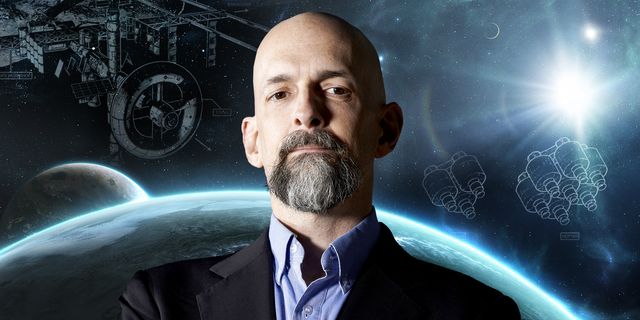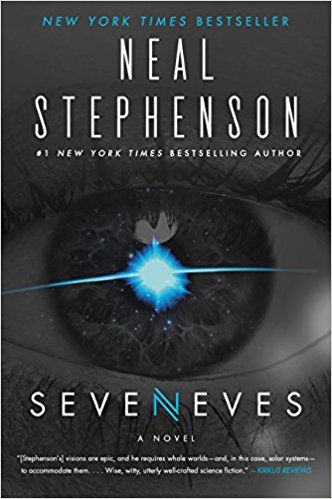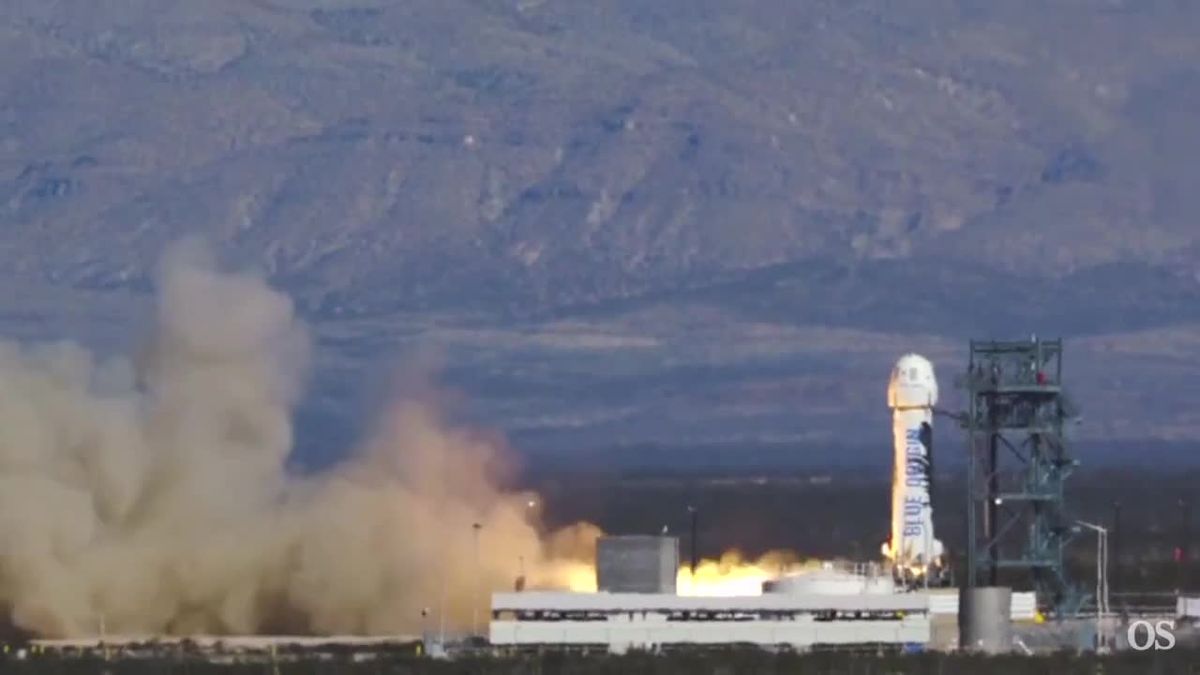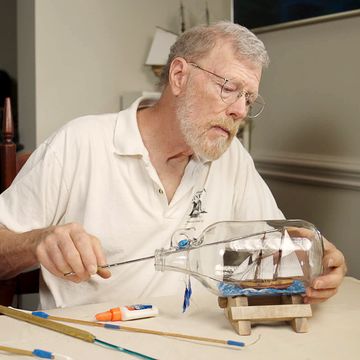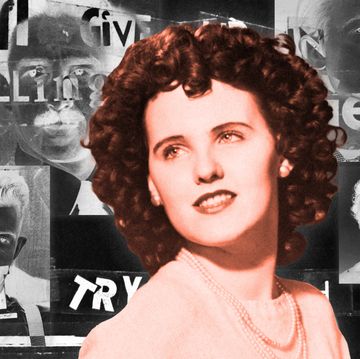Neal Stephenson's breakout hit, Snow Crash, envisioned a world of virtual reality—in 1992. The Diamond Age foresaw the future of nanotechnology in 1995. The more recent Reamde took the reader on a thriller through social media and MMORPGs, and his 2015 novel Seveneves is a story of humanity's survival in near-Earth space.
In short, Stephenson always seems to be at the forefront of new science and technology, at times stretching into the realms of fantasy, but more often pushing real tech to a near-future world of possibility. The author has a secret tactic for keeping up with the cutting edge: moonlighting in the tech industry.
"Some of the more outlandish ideas in Seveneves, like using whips as a propulsion or momentum transfer device, or whip-like chain-like structures, was all stuff that came out of Blue Origin," Stephenson told Popular Mechanics at the InterPlanetary Festival, part of Futurition | Santa Fe on June 7.
Blue Beginnings
Blue Origin is the space company founded by Amazon billionaire Jeff Bezos that's competing with the other titans of the private space race. Back when Stephenson joined the team in 1999, long before the company landed a rocket, the startup was just Bezos' skunkworks division called Blue Operations that was throwing ideas at the wall to see what would stick.
Stephenson says he often worked on "nuts and bolts" tasks like finding an office space, stringing ethernet cables, and figuring out the right machining tools the group needed to begin looking toward the future. But his interest in Bezos' group lay in his passion for alternative propulsion ideas—many of which would find their way into Seveneves in 2015.
"The basic idea was to explore the space of alternatives to chemical propulsion just to make sure we weren’t missing anything that was a promising alternative approach," Stephenson says of his time at Blue Origin. "It takes a while with a field that big to satisfy yourself that you haven’t missed any important clues."
In Seveneves, the moon mysteriously blows up just 10 to 15 years in the future. Humans have achieved only modest technological improvements, and the catastrophe forces them to take refuge on an ad hoc "Cloud Ark." The International Space Station is used as a platform to build the large space habitat as debris from the moon impacts and devastates the Earth.
Eventually, in the second half of the book, humanity is forced to turn to drastic measures to ensure the survival of the species for not just a few, but thousands of years. From the Cloud Ark, humans and robotic workers construct a ring habitat in space, traveling between Earth and the space habitats above using the whip-momentum propulsion ideas Stephenson conceptualized with the engineers of Blue Origin.
"I wanted to see a science fiction universe that is as close as I could make it to being physically realistic," Stephenson says. "There’s no teleportation, there’s no faster than light travel, no hyperspace."
Neal Stephenson's Next Vision
Stephenson is back working in the tech world. This time, he's part-time for the virtual reality company Magic Leap. And even though the Stephenson classic Snow Crash takes place in a virtual reality world, he says it has done little to inform his experience at Magic Leap. A quarter-century of tech innovation will do that to you.
"To me it feels like there’s surprisingly little connection," he says. "It’s been a long time and so many things have changed since then. Snow Crash was written pre-internet—the internet existed, but it wasn’t what people used like now."
When the famed author arrives at gigs like Magic Leap, he said sometimes the company can expect more of an "abstract and navel gazing philosopher." But he also wants to dig his hands into the innards of the physical technology to help him bound the fantastic to the realistic in his fiction. "Normally I think they’re startled when they see me stringing ethernet cable or pounding on things with a hammer," he says.
Still, Stephenson will give a scant few hints about his next novel. Last year's The Rise and Fall of the D.O.D.O., co-written with Nicole Gilland, told the tale of a surreal above-top-secret DARPA-like organization dabbling in metaphysics and magic. (The man doesn't always write hard sci-fi.)
"I don’t talk much about work in progress," Stephenson says. "I’ll say it’s… well…" He trails off, hesitating to answer before finally sticking to his guns. "I just don’t talk about things I’m working on. It’s a superstition with me."
Stephenson did provide a few clues about his current interests, though there's no telling if the subjects will end up in any of his novels. He repeatedly brought up advances in manufacturing and design that are captivating him, from fabrication to advanced design concepts. He's also been intrigued by recent developments in biology and its related fields.
"I feel like there’s a lot going on in life sciences that I don’t have the equipment to appreciate," he says. "I’m just not that well-versed in life sciences. I have a sense that I’m missing a lot in that area, and that a lot of the answers are from that realm."
Indeed, CRISPR gene editing, life-extension technologies, designer drugs, and other real fields of study are rapidly evolving beyond what was imaginable to sci-fi 20 years ago. Stephenson may not end up in a part-time gig at a medical lab, but maybe—like the epigenetics of Seveneves—the science could end up part of his fiction.
But beyond the sciences, Stephenson is always looking for the next engineering challenge that captures his eye.
"I think for products or technologies that are just breaking on the edge, there’s opportunities to create new things and make them do interesting things that require imaginative faculty but cannot actually be implemented with some practical know-how," he says.
Maybe it's time to get his hands dirty again.
